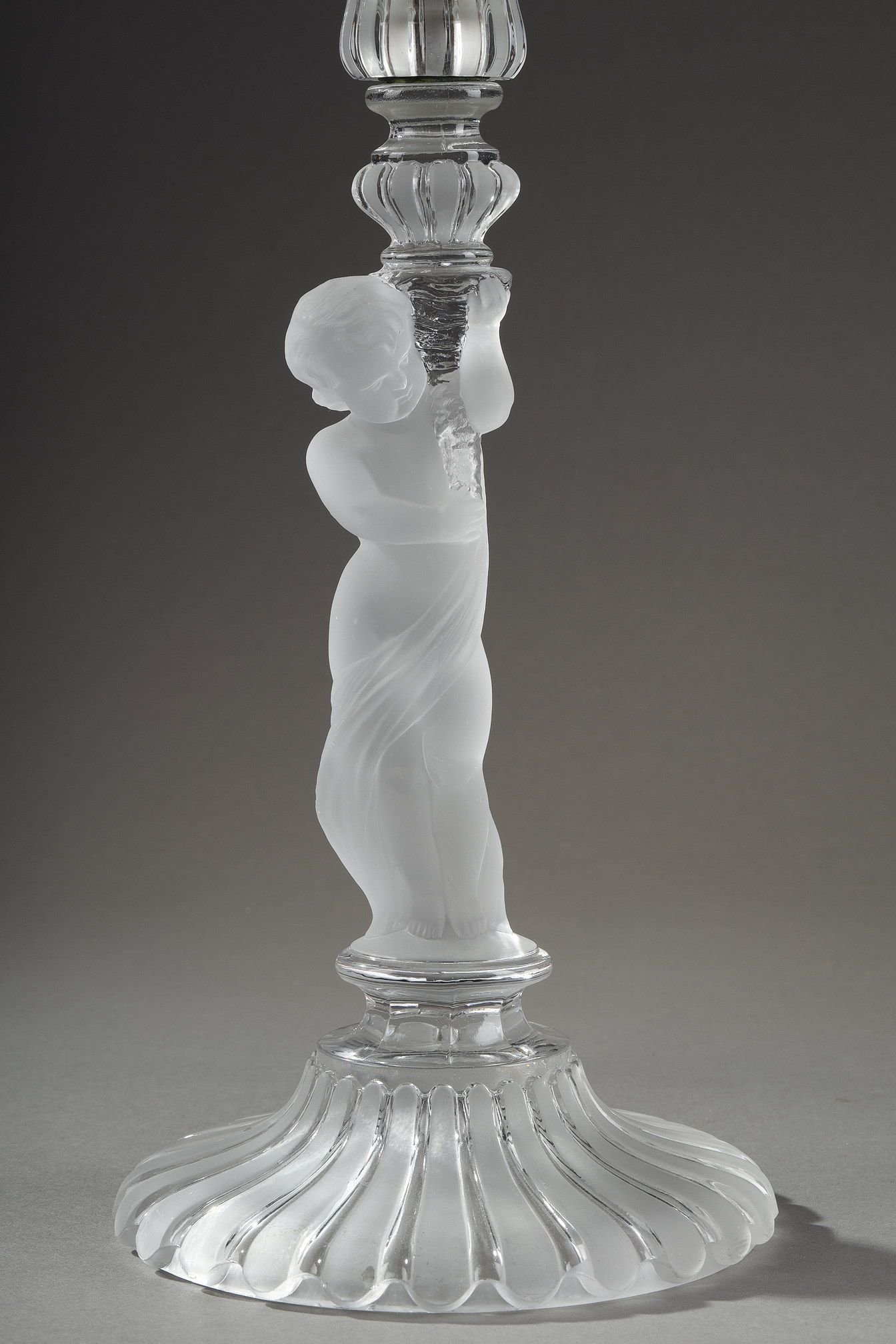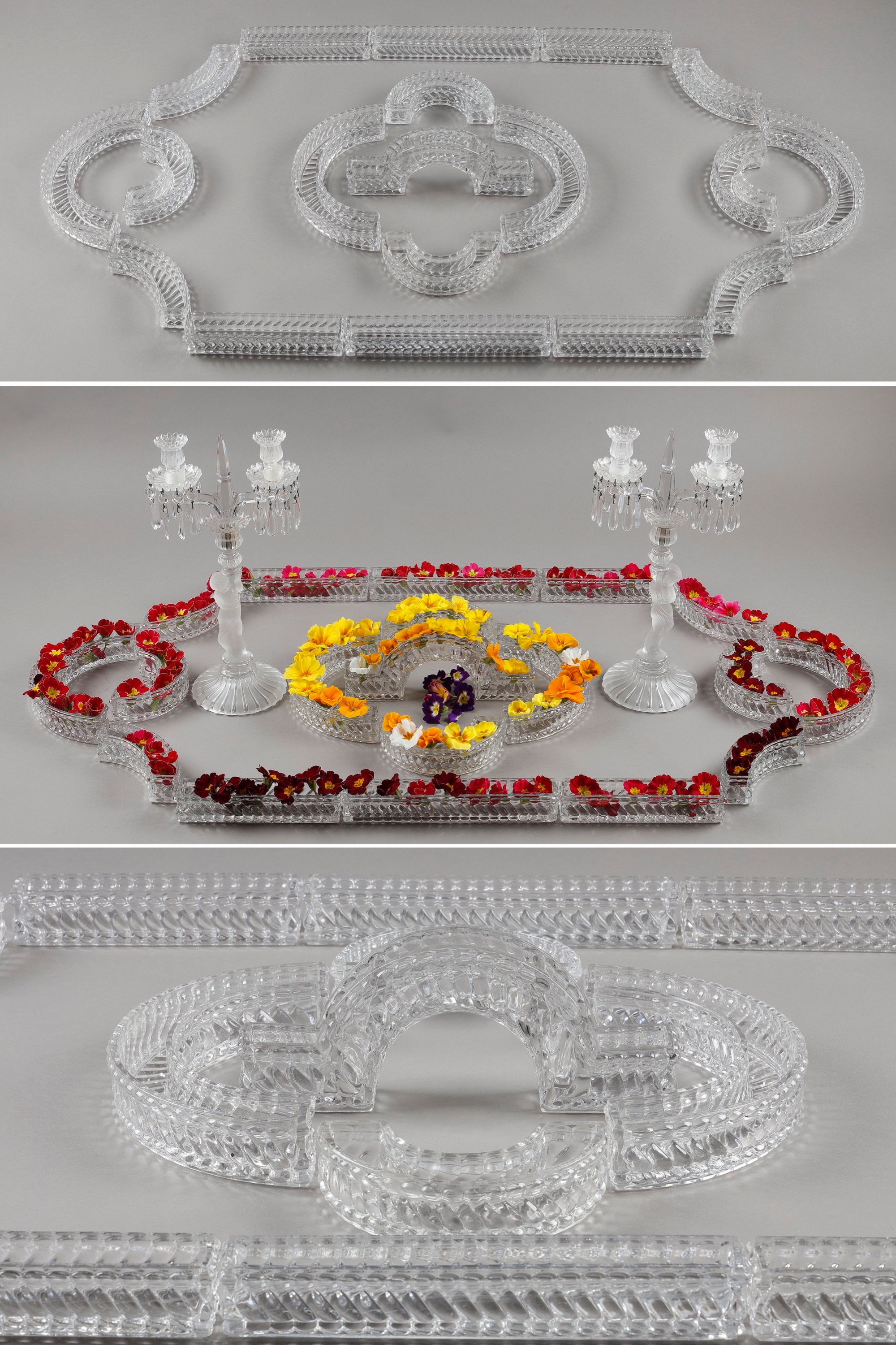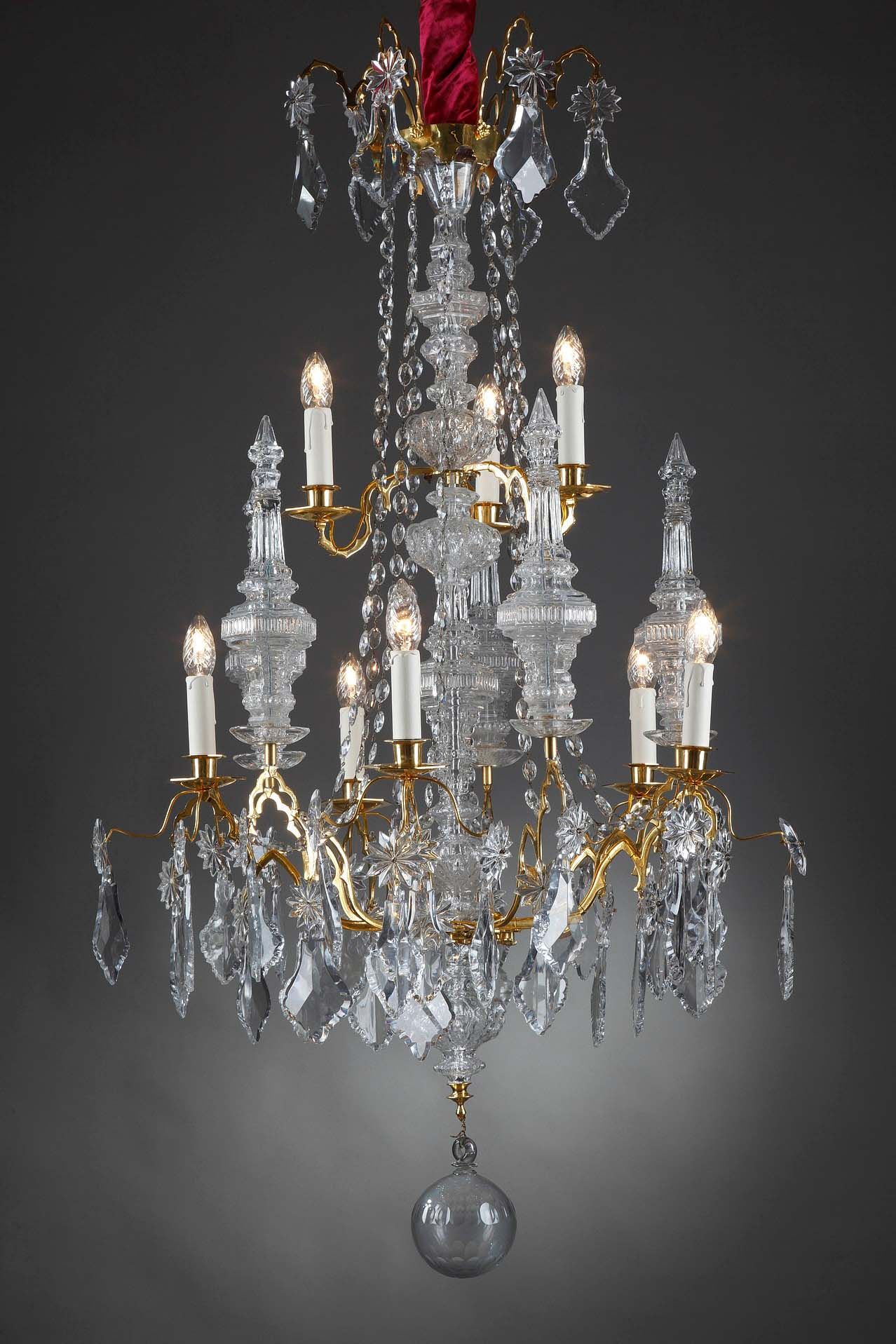The brilliance of Baccarat crystal
29.07.22
The crystal is a regular on festive tables in the form of champagne glasses. However, this precious material can be used in an infinite number of ways. The Baccaratconsidered Europe's benchmark for crystal, is proof of this. Let's take a look back at the history of a Lorraine factory and the excellence of French know-how.
THE ORIGINS OF BACCARAT CRYSTAL
In 1764, Louis Joseph de Montmorency-Laval, bishop of Metz, observed that "France lacks art glassware, and that's why Bohemian products enter the country in such large quantities, resulting in an astonishing export of money at a time when the kingdom is in such great need of it". To remedy the situation, he asked King Louis XV for authorization to establish a glassworks in Baccarat, Lorraine.
The region's silica-rich soil is ideal for glass production. The presence of numerous forests allows to feed the furnaces of the factories which heat at any time. In order to allow the workers to intervene at the time of glass' fusion, more than 70 families of workers are accommodated within the factory.
It was only after the industrialist Aimé-Gabriel d'Artigues bought the factories that the company began to produce the crystal for which it is now famous. Owner of the Vonêche glassworks and crystal works in Belgium, he decided to set up in France following treaties in 1815 that made importing complicated by increased customs duties. Baccarat's transformation into a crystal factory was a huge success, and by 1817 the factories were employing 300 workers.
GLASS OR CRYSTAL?
Thus, Baccarat gave up glassmaking to become a crystal glassworks. While the techniques are similar, the results are very different. Do you know the difference between glass and crystal?
Originally, the term crystal, from the Greek Krustallos meaning "piece of ice", refers to rock crystal, hyaline quartz, formed by the infiltration of water into the depths of granitic rocks. Its transparency fascinated collectors, who added it to their cabinets of curiosities. As early as the 14th century, the term was also used to describe particularly transparent materials.
Glass was already widely used in European courts, but it's crystal that stands out in this new denomination. Both materials are made from silica, but what differentiates them is the amount of lead incorporated into the composition. Crystal traditionally contains between 10 and 32% lead oxide. In Europe, the name is protected by the 1971 European Economic Community, which stipulates that only objects containing more than 24% lead and having a refractive index equal to or greater than 1.545 are considered crystal.
The two materials differ in quality. Crystal differs from glass in its properties of light refraction , density and hardness. The higher the concentration of lead oxide, the more transparent the crystal and the easier it is to polish, which explains its brilliance. Furthermore, a glass object will be lighter than a similar crystal object. It is denser and therefore more solid, despite popular belief. This enables finer cutting and engraving to be carried out without the risk of breaking the work.
 Detail of engraving on a crystal decanter, circa 1900
Detail of engraving on a crystal decanter, circa 1900
But the most recognizable feature for crystal enthusiasts is the crystal-clear tinkle it produces. This crystalline sound is one of the first characteristics one thinks of. It depends on the shape, size and quality of the glassmaker's work. An assortment of disparate glasses can give a beautiful melody to your toast.
BACCARAT INNOVATIVE HOUSE
Throughout its development, the Baccarat crystal works have always been at the cutting edge of creation to seduce its customers. In 1824, one of the workers, Ismaël Robinet, invented the piston air pump. This first mechanical blowing process saved the glassmakers' breath. The technique was subsequently adopted by all other French glassworks. In 1830, this discovery led to the adaptation of the pressé-moulé process, already in use in the United Kingdom and the United States, enabling the crystal gob to be applied to the mold in a single jet. This made it possible to produce shaped pieces much more quickly.
 Detail of a putti in satin-finish crystal, Baccarat crystal chandelier
Detail of a putti in satin-finish crystal, Baccarat crystal chandelier
At the same time, rich-cut crystal glasses are made for wealthy customers. The facets emphasize the play of light and the purity of the shapes. Under the Restoration, diamond-tipped decorations were used to highlight the luminosity of the material. This technique was sometimes combined with glass engraving, which enjoyed great success. Difficult to master, it required great skill, leading to the idea of "glass artists" whose pieces were particularly sought-after, such as those by the engraver Simon.
Eight-light crystal cage chandelier, 19th century period
Baccarat was the first crystal manufacturer in France to present crystal chandeliers at the 1827 Exposition Nationale du Produit de l'Industrie Française . On this occasion, it presented a whole assortment of pieces to adorn bronze chandeliers and play with the movement of candle flames. These included tassels, octagon chains, faceted pearls and dagger motifs, all of which were very popular throughout the 19th century. For these productions, the company teamed up with great names such as the bronzemaker Pierre-Philippe Thomire (1751-1843), who designed frames dedicated to these crystal ornaments. Always on the lookout for new discoveries, from 1870 Baccarat offered models of electrified chandeliers with hollow crystal branches to conceal the wires.
BACCARAT, EXCEPTIONAL WORK
 Baccarat cut crystal jewelry box
Baccarat cut crystal jewelry box
Baccarat's genius lies in its ability to meet the growing demand for glassware from the bourgeoisie. In the early 19th century, the favorable socio-economic context led this new social category to invent the concept of conviviality. Prosperous, they gathered for dinners and balls, and every household wanted to stock up on luxurious objects to affirm their status in society. Crystal can be found on every table in the form of glasses, ewers and girandoles, but also in more intimate rooms in the form of jewelry boxes, drageoirs or the transposition of rock crystal objects from the 16th and 17th centuries exhibited in the Louvre. In this way, Baccarat crystal in particular became the benchmark for luxury in all aspects of bourgeois life.
The finesse and exceptional brilliance of Baccarat pieces have led to success far beyond France's borders. Called the "crystal of kings", the courts of the world have been buying from Baccarat since the beginning of the 20th century. After a visit to Paris in 1900, Tsar Nicholas III of Russia placed large orders with the factory. Legend has it that the sovereign threw his crystal glasses over his shoulder after emptying them. He wanted to prove his country's wealth by spending lavishly on these exceptional pieces. To supply him, one of the three furnaces in operation at the Baccarat factory was dedicated exclusively to the Russian court. Another striking example: in the 1930s, the Maharaja of Gwalior purchased an imposing crystal chandelier for the oriental hall of his palace, which was so heavy that the ceiling collapsed when it was installed. This did not discourage the patron, who had it rebuilt more solidly, even going so far as to suspend an elephant to check that a new Baccarat chandelier could be installed. Even today, governments purchase crystal services from the company.
CONCLUSION
Crystal is a symbol of luxury and sophistication. With a history of more than 250 years, the Baccarat factory has helped to make crystal an essential element of decor through its expertise and creativity. Whether in candelabras or tableware, you can't go wrong with a crystal piece that will illuminate your home with its shine.
Discover our collections of crystal objects
Bibliography
- Baccarat: the legend of crystal, Musée du Petit Palais, Paris-Musée, 2014
- Baccarat, Dany Sautot, 1998




